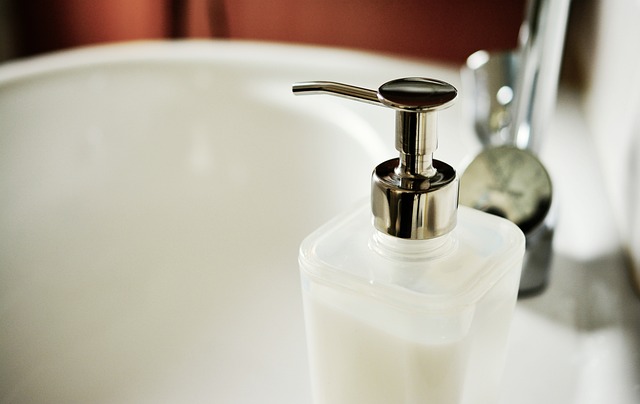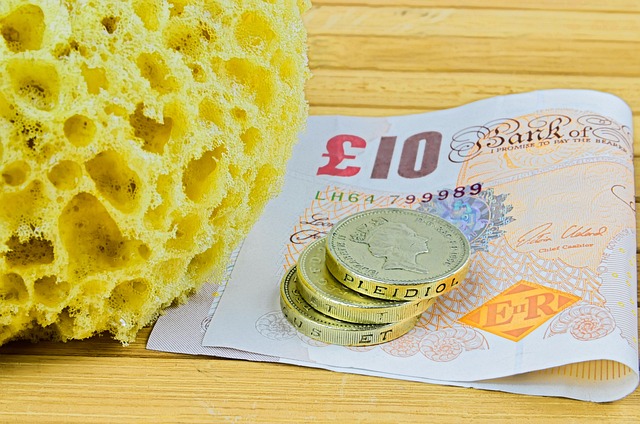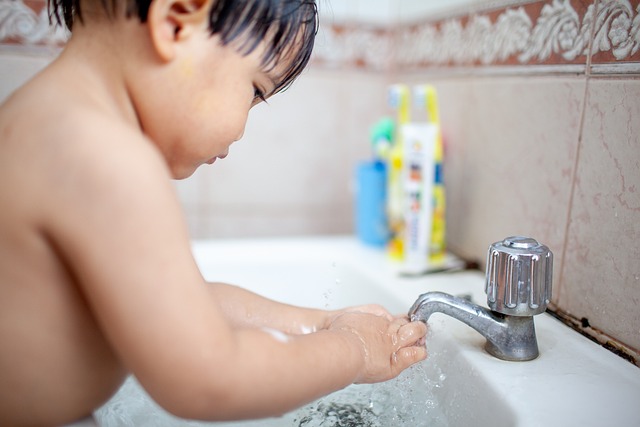Deep tile and grout cleaning is essential for maintaining hygiene, aesthetics, and longevity in high-moisture areas like bathrooms and kitchens. This process involves penetrating pores to eliminate stains, buildup, and bacteria. Tailored approaches are needed for each space due to their distinct challenges. Regular deep cleaning prevents mold, mildew, and grease accumulation. The right tools, such as pressure washers and grout brushes, enhance efficiency. Natural cleaners offer a safer alternative to harsh chemicals. Proper maintenance includes vacuuming, sealing, and professional help when required.
In today’s bustling homes, tiles and grout often take a beating from moisture, dirt, and stains. Deep tile cleaning isn’t just about aesthetics; it’s crucial for hygiene and longevity of your bathroom and kitchen surfaces. This comprehensive guide delves into the intricacies of deep tile and grout cleaning, offering insights on why it matters, exploring differences between bathroom and kitchen tiles, common issues over time, and providing a step-by-step approach using natural or chemical solutions. Learn when to seek professional services for a sparkling, healthy home.
Understanding Deep Tile and Grout Cleaning: Why It Matters

Deep tile and grout cleaning is a crucial process, especially in high-moisture areas like bathrooms and kitchens. It involves penetrating deep into the pores of tiles and removing stubborn stains, buildup, and bacteria that regular vacuuming can’t reach. This method ensures that your flooring surfaces are not just visually clean but also hygienic.
For instance, in bathrooms, where humidity is high and grout lines are more visible, deep cleaning helps to prevent the growth of mold and mildew. In kitchens, it keeps the area looking fresh and prevents grease and grime from accumulating, making it easier to maintain a sanitary environment for food preparation. Deep tile cleaning for bathrooms and kitchens is an investment in your home’s longevity and value.
The Differences Between Bathroom and Kitchen Tiles

Bathroom and kitchen tiles often face distinct challenges due to their varying uses and environments, necessitating tailored approaches for deep tile cleaning. In bathrooms, moisture and humidity are prevalent, leading to the growth of mould and mildew, especially in dark, poorly ventilated spaces. These organic contaminants require specific enzymes or biocide solutions to effectively remove without damaging the ceramic or porcelain surfaces.
Kitchens, on the other hand, endure constant exposure to grease, oil, and food particles that can accumulate in grout lines and tile crevices. Deep cleaning methods for kitchens often involve more aggressive chemical cleaners and scraping tools to eliminate stubborn stains and grime. Additionally, kitchen tiles may be subject to spills and tracks from appliances, requiring quick response times with suitable cleaning agents to prevent lasting damage.
Common Issues with Tile and Grout Over Time

Over time, tiles and grout in bathrooms and kitchens often face a range of issues that can diminish their aesthetic appeal and functionality. Regular wear and tear, along with exposure to moisture and dirt, leads to problems like staining, discolouration, and the growth of mould and mildew. The narrow gaps between tiles and grout make them especially vulnerable to the accumulation of grime, food particles, and bacteria, which can be difficult to remove with routine cleaning methods. Furthermore, improper sealing or lack of maintenance can cause grout to become brittle and crack, allowing dirt and moisture to infiltrate deeper into the tile and grout structure, exacerbating the problem over time. This necessitates a thorough understanding of deep tile and grout cleaning techniques to restore these surfaces to their original condition.
Choosing the Right Tools for the Job

When it comes to deep tile and grout cleaning, especially in bathrooms and kitchens, the right tools make all the difference. For this task, a pressure washer is often the game-changer. These powerful machines can efficiently remove stubborn dirt, grime, and even mold from hard-to-reach areas. A pressure washer’s high-pressure stream of water acts as a deep cleaning agent, ensuring no residue or bacteria are left behind.
Additionally, investing in a good quality grout brush is essential. Grout brushes have fine bristles designed to penetrate the narrow crevices between tiles, allowing for thorough cleaning and disinfection. For areas with more intricate tile patterns or natural stone surfaces, specialized tools like scrub pads or fiber brushes can be employed to avoid damaging delicate finishes while still achieving exceptional cleanliness.
Step-by-Step Guide to Deep Cleaning

Deep tile and grout cleaning is a process that goes beyond surface-level scrubbing. For bathrooms and kitchens, where tiles and grouts are prone to staining, buildup, and mold growth, a thorough deep clean is essential for maintaining hygiene and aesthetics. Here’s a step-by-step guide to ensure your tiles and grouts shine like new:
1. Preparation: Begin by removing all furniture and accessories from the area to be cleaned. Protect adjacent surfaces with drop cloths or plastic sheeting. Gather your cleaning supplies, including a good quality tile cleaner, grout cleaner, stiff brushes, sponges, and a pressure washer (if available). For hard-to-reach areas, consider using a long-handled brush.
2. Scrubbing: Apply the tile and grout cleaner to the tiles and grouts using a sponge or brush. For stubborn stains, let the cleaner sit for several minutes before scrubbing thoroughly. Use a stiff brush for grouts to dislodge any built-up grime. Pay special attention to corners, edges, and areas under fixtures where dirt tends to accumulate. Rinse frequently with warm water to prevent the cleaner from drying on the surfaces.
3. Rinsing: After scrubbing, rinse the area thoroughly with a garden hose or pressure washer to remove all cleaning residue. Ensure no cleaner remains, as it can leave streaks and attract dirt. For grout lines, use a grout brush to clean deeply and then rinse well.
4. Drying: Allow the tiles and grouts to dry completely before sealing or resealing them. Proper drying prevents water damage and ensures your sealer adheres well. You can speed up the process by using fans or blowers but ensure no moisture remains, especially in areas prone to mold growth like bathrooms.
Natural Cleaning Solutions vs. Chemical Agents

When it comes to deep tile and grout cleaning, especially in high-traffic areas like bathrooms and kitchens, the choice between natural cleaning solutions and chemical agents is an important one. Natural cleaners, often derived from everyday household items like baking soda, vinegar, and lemon juice, offer a safer alternative with minimal environmental impact. They are effective at breaking down grime and grease while being gentle on your skin and respiratory system. For instance, a mixture of white vinegar and water can cut through soap scum and hard water stains without harsh chemicals.
On the other hand, chemical cleaning agents provide powerful cleaning capabilities, quickly eradicating even stubborn buildup. However, they can be aggressive and potentially harmful if not used properly. Many common tile cleaners contain strong acids or bases that may damage grout over time. As such, for deep tile cleaning in sensitive areas like bathrooms and kitchens, natural solutions are often the safer bet, providing effective cleaning without the risks associated with harsh chemicals.
Tips for Maintaining Clean Tiles and Grout

Keeping your tiles and grout looking their best requires a bit of regular maintenance. For spaces with high foot traffic, like bathrooms and kitchens, deep tile cleaning should be scheduled periodically to remove stubborn stains and grime that surface cleaners might miss. Start by wiping down surfaces with a damp cloth to remove loose dirt and debris. Next, use a mixture of warm water and a mild detergent to scrub the tiles and grout lines thoroughly. Avoid over-saturating the area; too much moisture can damage the grout.
For extra deep cleaning, consider using a grout brush or steam cleaner to penetrate hard-to-reach spaces and break up stubborn buildup. Preventing future stains requires regular vacuuming or sweeping to eliminate loose debris before it settles into the grout lines. Additionally, sealing your grout every 6-12 months can create an impermeable barrier against water, dirt, and other contaminants, preserving the cleanliness and longevity of your deep tile cleaning efforts in bathrooms and kitchens.
Professional Services: When to Consider Hiring Experts

Many homeowners attempt deep tile and grout cleaning as a DIY project, but there are times when enlisting professional help is the best course of action. For spaces like bathrooms and kitchens—where tiles and grouts accumulate dirt, grime, and often mold or mildew—a thorough, safe, and effective clean requires specialized equipment and expertise.
Professional cleaners have access to powerful yet safe cleaning solutions and high-tech tools designed specifically for deep tile and grout cleaning. They understand the different types of tiles and grout, how to avoid damaging surfaces during the cleaning process, and how to effectively remove stubborn stains and buildup without compromising the integrity of the materials. By hiring experts, you ensure a deeper clean that leaves your bathroom or kitchen looking like new, extending the life of your tiles and grout.
